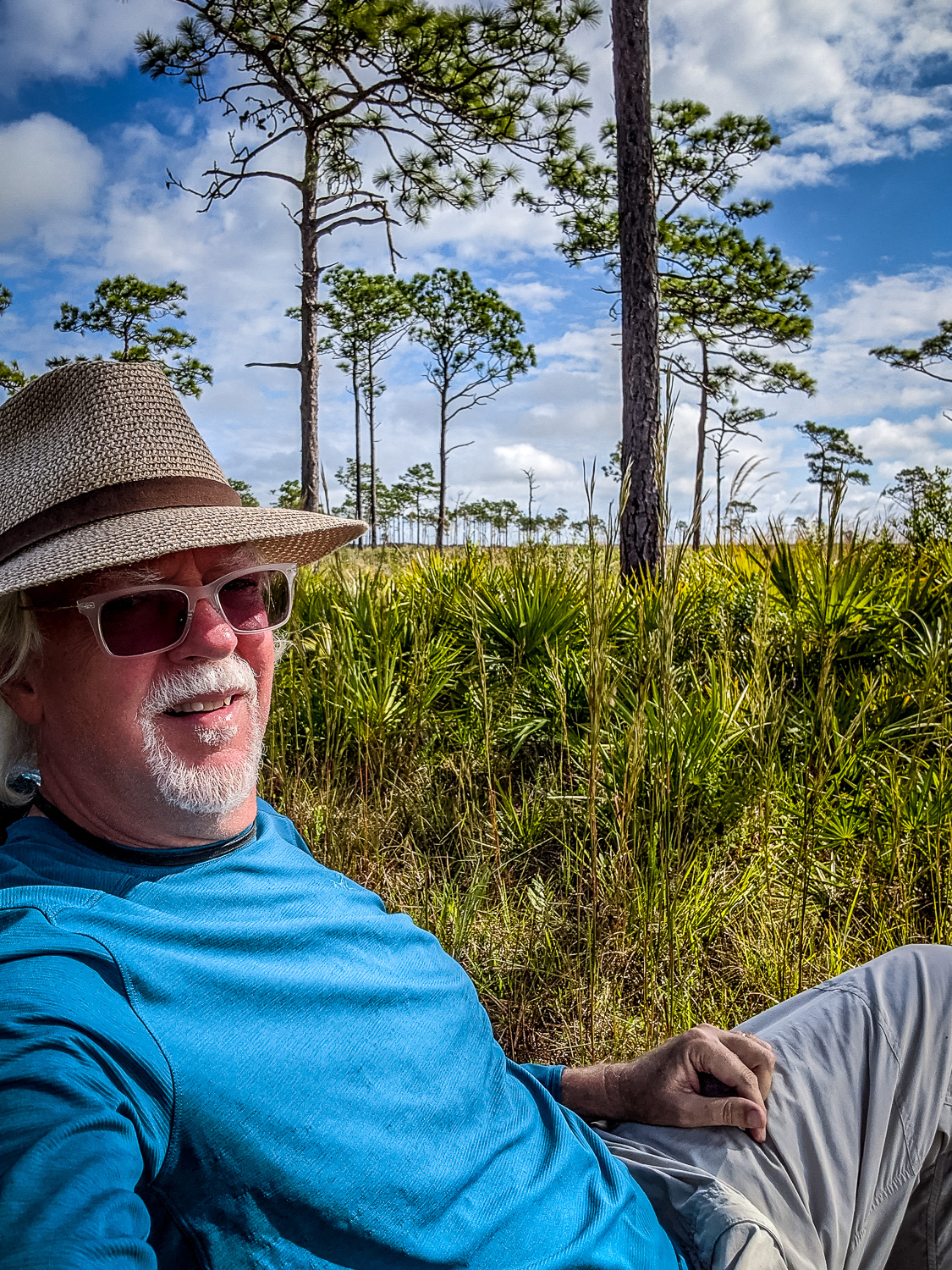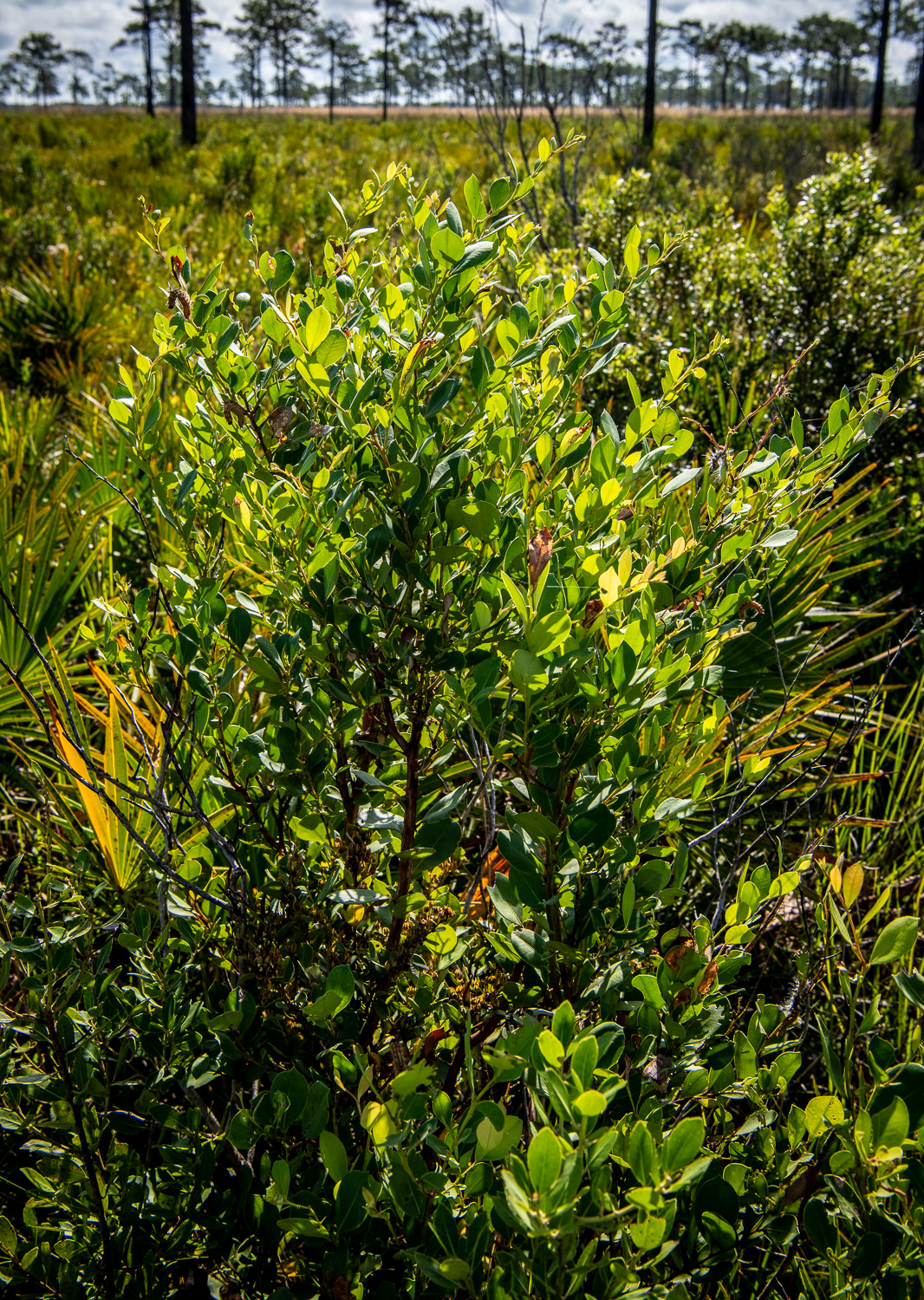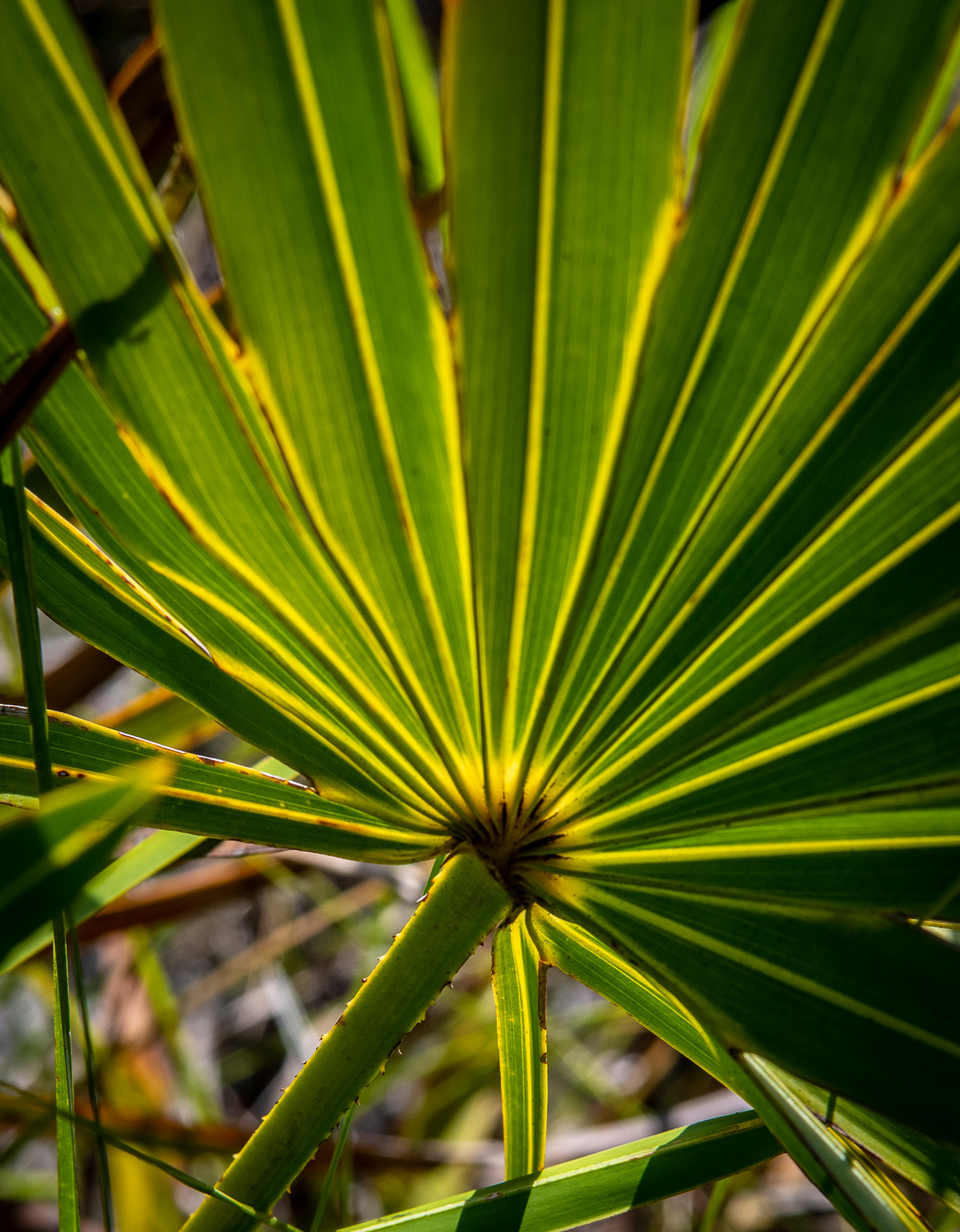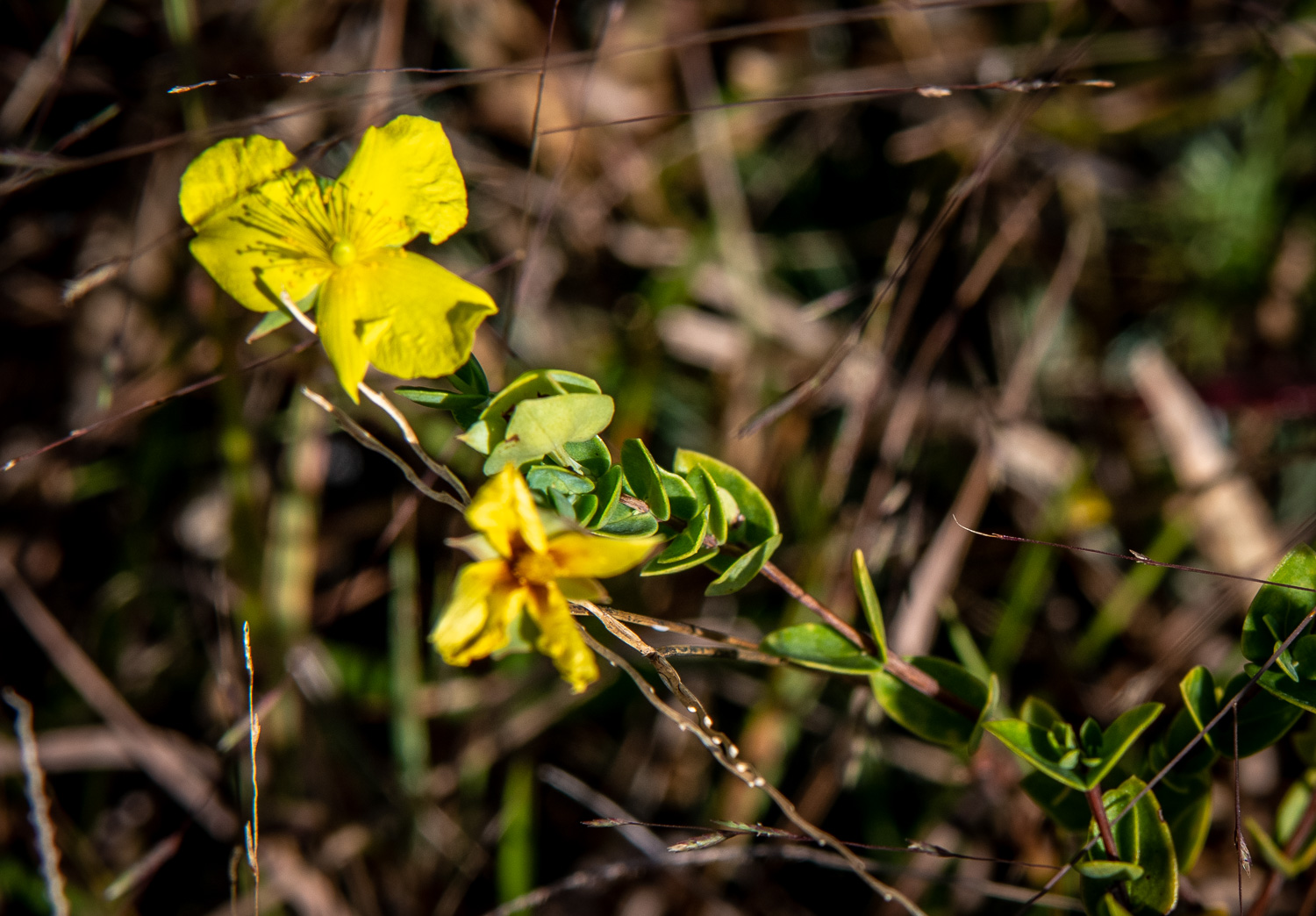I headed out to the mesic flatwoods site reference in Myakka River State Park, which you can get to by going from the main park road to the Ranch House Road trail. Head straight out there all the way to Bee Island Campground and right there is a big stand of longleaf pines, which are among the few long-leaf pine stands in the park. Mostly I see slash pines in the park.
To get there, you will have the pleasure of going through the hydric hammock and the dry prairie, which are starting to dry up this time of year, but they are still pretty wet. It’s 2.5 to 3 miles to get out there, so bring plenty of water. You won’t be able to drink from the marshes. And once you are out there, it’s pretty dry with sandy soil.
It’s definitely beautiful with the pines silhouetted against the Florida clouds. And it’s quiet. You won’t see a soul, although an occasional plane flies over. But every now and then the chatter of birds and insects pick up. I was excited to hear at least two Meadowlarks, which are rare in the area, along with an array of red-bellied woodpeckers, black and turkey vultures, and red shouldered hawks.
I have trouble identifying longleaf pines, but there were a number of telltale oversized cones around. I’m not good at remembering needle cluster counts. The pines dominate the landscape, but the other growth is very similar to the dry prairie, with saw palmetto and shiny lyonia – fetterbush prominent.
I pretty much set up shop there with my camping chair and water bottle, and started paying attention. Of course there were lots of lots of insects, but not to troublesome, and in the moth/butterfly category, I saw many buckeyes and white peacocks, and one bella moth and one swallowtail butterfly.
There were also many of the usual suspects among wildflowers: yellow-eyed grass, which has a lovely yellow flower and when not in bloom, it looks like a little pine cone on the end of a stem. Among other yellow flowers, there were asters, silkgrass, fringed star grass, goldenrod, St. John’s wort and the yellow milkwort, known locally as bachelor’s button.
In the pink, purple and white range were chaffheads, carolina redroot, false foxgloves and thistles. I also saw Gentians, Arrowheads, and tall elephant’s foot.
There were definitely signs of a burn, but I would say this area had not been burned for a year or two. You could see it the charred base of pine trees, and charred palmetto roots.
If you get a chance to visit this place, do yourself a favor and find some shade. The sun beats down, and in October, it’s between 85 and 90 degrees. You’re going to sweat.
After a time I packed up and headed back to civilization, but not before having my first ever sighting of a pine lily, which is typically not in bloom around here in October. And I had been wanting to see one for some time.

































